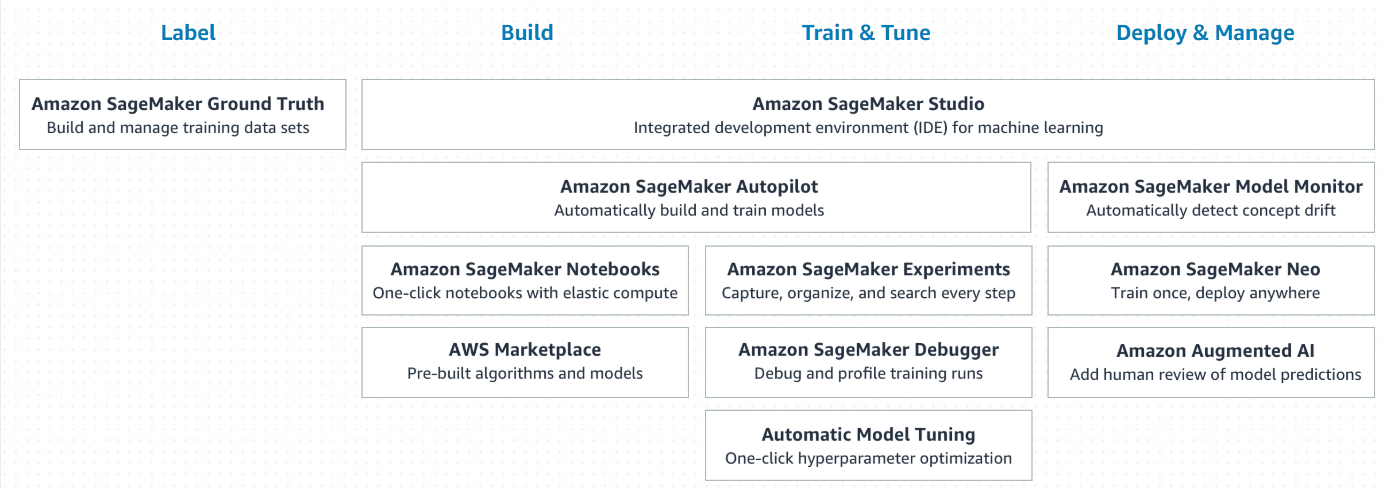Amazon Web Services (AWS): Sagemaker: Points to remember (New Updates)
Let's learn about Amazon SageMaker (New Updates):
-
SageMaker Autopilot is the industry’s first automated machine learning capability that gives complete control and visibility into ML models.
-
Autopilot automatically inspects raw data, applies feature processors, picks the best set of algorithms, trains & tunes multiple models.
-
Users get full visibility into how the model was created and what’s in it & SageMaker Autopilot integrates with SageMaker Studio.
-
SageMaker Autopilot can be used by people without machine learning experience to easily produce a model.
-
SageMaker provides a full end-to-end workflow, but users can continue to use their existing tools with SageMaker.
-
SageMaker allows users to select the number and type of instance used for the hosted notebook, training & model hosting.
-
SageMaker stores code in ML storage volumes, secured by security groups and optionally encrypted at rest.
-
SageMaker Studio provides a single, web-based visual interface where users can perform all ML development steps.
-
SageMaker Studio gives users complete access, control & visibility into each step required to build, train & deploy models.
-
SageMaker Autopilot is a generic automatic ML solution for classification and regression problems, such as fraud detection, churn analysis & targeted marketing.
-
Users can train models using SageMaker Autopilot and get full access to the models as well as the pipelines that generated the models.
-
SageMaker Autopilot supports 2 built-in algorithms at launch: XGBoost and Linear Learner.
-
Amazon SageMaker Autopilot built-in algorithms support distributed training out of the box.
-
Sagemaker - Jupyter notebooks are supported.
-
SageMaker Notebooks provide one-click Jupyter notebooks that users can start working with in seconds.

-
With SageMaker Notebooks users can sign in with their corporate credentials using SSO and start working with notebooks within seconds.
-
SageMaker Notebooks give users access to all SageMaker features, such as distributed training, batch transform, hosting & experiment management.
-
SageMaker Ground Truth provides automated data labeling using machine learning.
-
SageMaker Ground Truth will first select a random sample of data and send it to Mechanical Turk to be labeled.
-
SageMaker Experiments helps users organize and track iterations to machine learning models.
-
SageMaker Experiments helps users manage iterations by automatically capturing the input parameters, configurations and results, and storing them as experiments.
-
SageMaker Debugger makes the training process more transparent by automatically capturing real-time metrics during training such as training and validation, confusion matrices & learning gradients to help improve model accuracy.
-
The metrics from SageMaker Debugger can be visualized in SageMaker Studio for easy understanding.
-
SageMaker Debugger can also generate warnings and remediation advice when common training problems are detected.
-
SageMaker RL includes RL toolkits such as Coach and Ray RLLib that offer implementations of RL agent algorithms such as DQN, PPO, A3C, and many more.
A Points to remember series by Piyush Jalan.